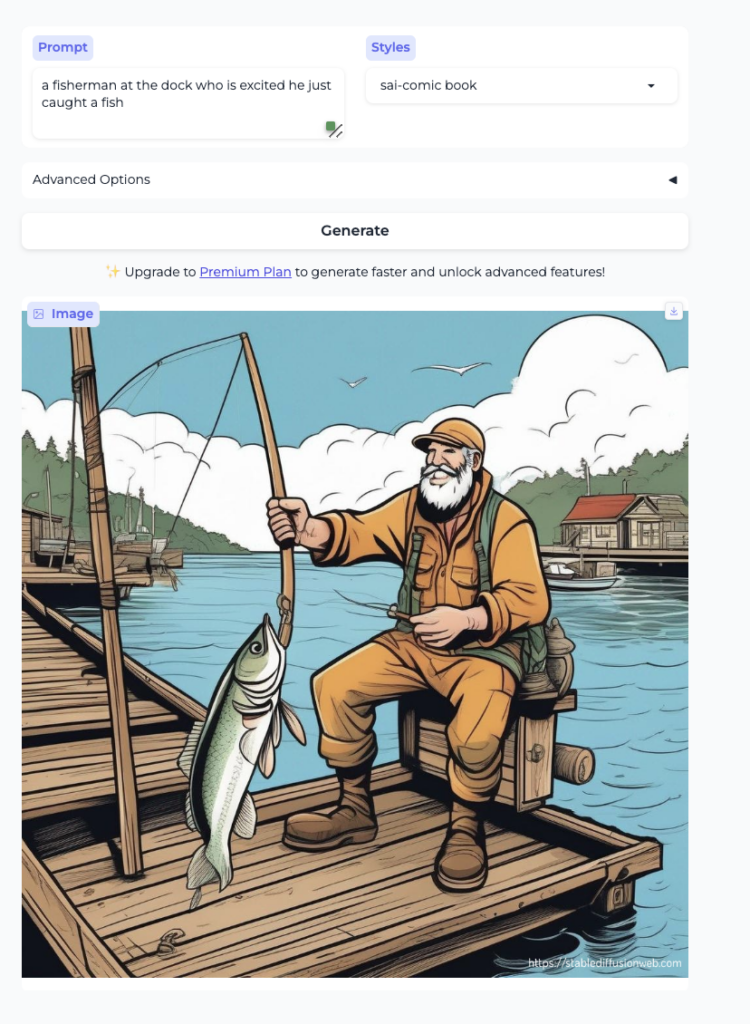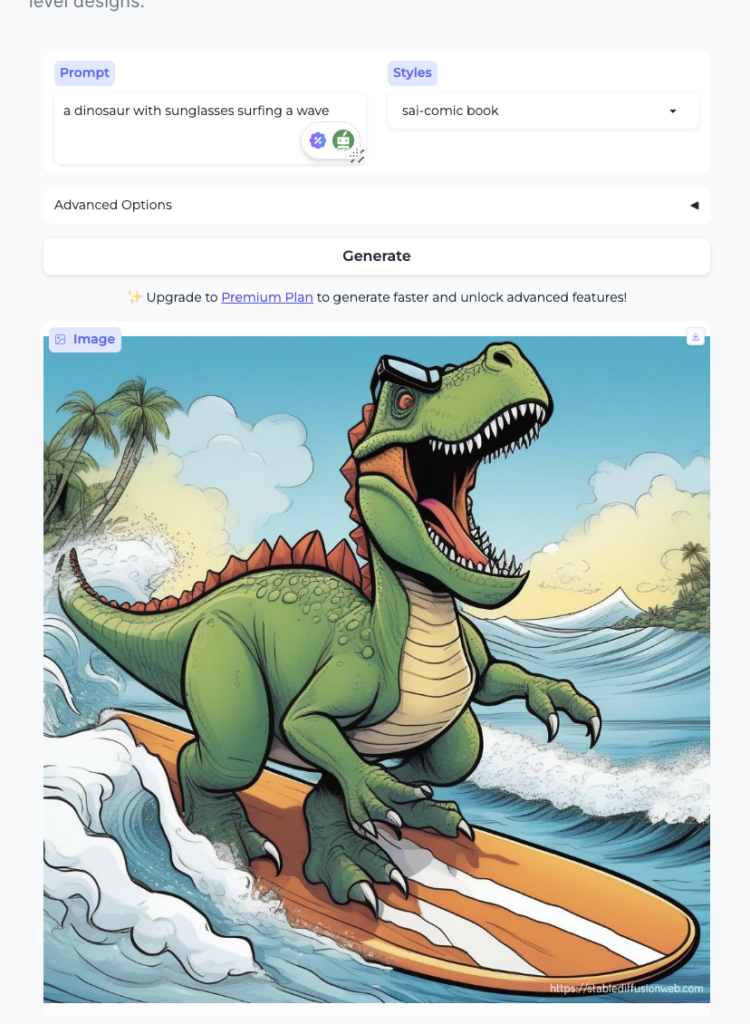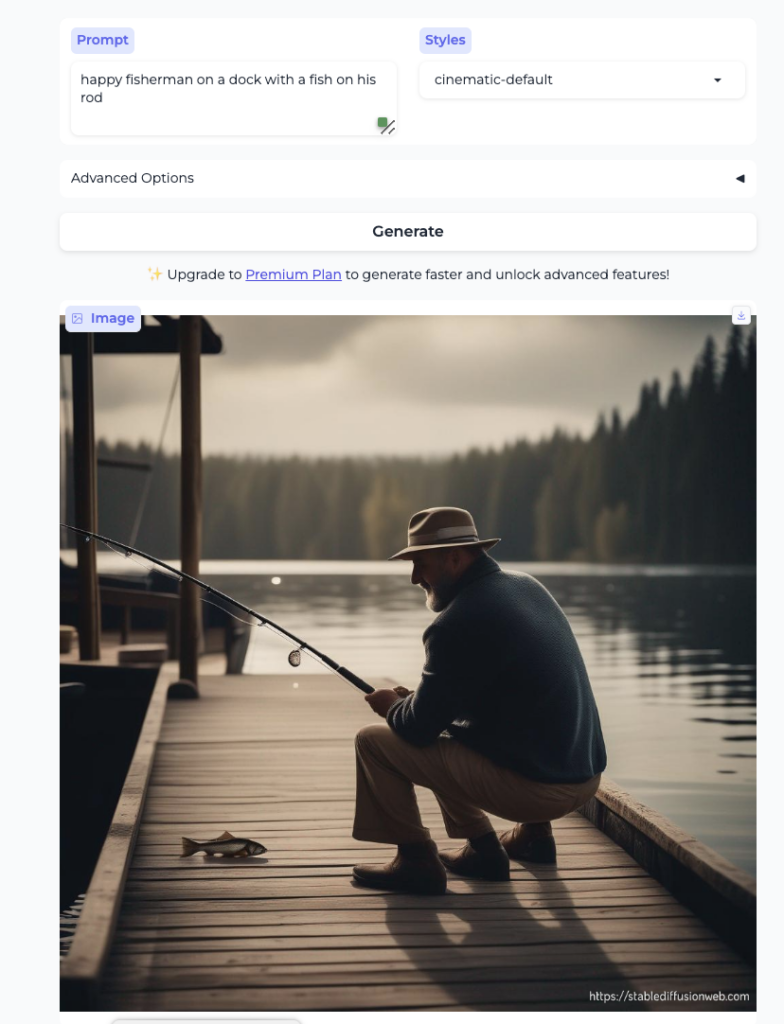Generative AI
I chose to use one of the photo AI applications because they were the ones I hadn’t had a lot of time playing around with. I thought that it did a pretty great job with the prompts that I gave it, and I thought that it was cool that it generated different photos based on what style you chose. I tried out two different styles. I tried out similar prompts for them because I wanted to see how different the photos would be, and then I tried out a different prompt just for fun.



Have you used AI applications before? If you have, what have you used them for? What apps have you come across that are not in the Explore section that you’ve found useful?
I can honestly say that I have used ChatGPT almost daily since it became available in November of last year. I have found it to be an absolutely wonderful tool if it’s utilized in the right manner. I use it mainly for studying, as it has helped me summarize large chunks of information and come up with the best areas to focus on when it comes to midterms. It helps me generate better sentence structure and gives me suggestions on how to improve my writing when it comes to writing essays and papers.
How might the use of these tools create a more inclusive learning experience? Who might be excluded?
Reflecting on the potential integration of AI tools in education, there emerges a notable prospect of fostering inclusivity within the learning experience. The prospect of personalized learning paths, facilitated by AI, holds promise for accommodating diverse learning styles and providing tailored feedback. Features enhancing accessibility, particularly for individuals with disabilities, and language support tools for non-native speakers underscore the potential for inclusivity. However, a measured consideration of potential limitations is essential. The prospect of a digital divide, where some students may lack access to the necessary technology, emphasizes the need for equitable distribution. Additionally, the recognition of biases within AI algorithms necessitates a vigilant approach to ensure fairness across diverse student populations. Recognizing these challenges, there is a collective responsibility to navigate the integration of AI tools thoughtfully, addressing potential exclusions, and creating an educational landscape that is genuinely inclusive and accessible to all.
What ethical concerns do you have (or not have) about the use of some of these tools?
As we explore the integration of AI tools in educational settings, there are definitely ethical considerations that come into play. Obviously, this is being widely discussed among educational institutions in terms of AI’s ability to generate information for students. I have already seen a lot of my teachers transition back to paper exams and tests as opposed to online ones due to the ability that AI gives students to cheat. As I mentioned earlier, I think that AI is a wonderful tool if it is utilized in the proper way, so I can understand the worry amongst professors and teachers with the fear of students using it in a proper way. A couple of other concerns that are associated with AI could be the fact that not everyone has the same access to technology, creating a potential gap where some students might miss out and not be able to have the opportunity to utilize it.
Aside from the educational side of things, another topic of AI that is a concern is its ability to do identity replication, especially prevalent in the music and film industries. Deepfakes, for instance, allow AI to mimic someone else’s face or voice. While it’s a game-changer for movie effects, there’s a darker side when it’s used deceptively. It’s essentially AI donning someone else’s identity, and that brings a whole new layer of ethical complexity into the mix. For both musical artists and actors and actresses, this allows people to copy their identity and voice without them even having to be in the movie/song. And in the midst of all this tech, do we really understand what these AI tools are doing? It’s crucial to have clear communication and consent, so everyone knows what they’re signing up for? As we navigate this AI landscape, it’s vital to strike a balance, ensuring it’s not just a tech thrill ride but a fair, transparent, and responsible journey for everyone involved at the university level.
What might you use AI tools for moving forward? What would you not use them for?
As I currently find myself using AI for a variety of things, I feel like there is a wider variety of things moving forward that AI could be useful for. Using ChatGPT to kickstart writing projects, summarize information, or create basic outlines as I continue my schooling I also think it would be interesting to utilize AI tools to compile resource lists, summaries, or explanations on complex topics Using AI applications like Duolingo’s Roleplay for practicing real-world conversations
Alternatively, AI tools, while helpful, should not be relied upon as substitutes for independent thought and innovative ideas. I also obviously believe that Academic assessments should reflect genuine understanding and effort, not just AI-generated content.
Where do you think these tools will be in their evolution in 2-3 years’ time?
While the evolution of AI might be exciting, with all of the advances its already made it definitely feels a little bit off-putting. Some pros of the evolution of AI include the fact that AI tools are likely to improve their understanding of context, allowing for more nuanced and accurate responses. This could involve a better grasp of user intent and a reduction in instances of generating misleading or irrelevant information. Additionally, the integration of AI tools with AR and VR technologies may offer immersive and interactive learning experiences. This could be particularly beneficial in educational settings, allowing users to engage with AI-generated content in three-dimensional spaces. I can also see the potential of the future, seeing increased emphasis on collaboration between humans and AI. AI tools could serve as collaborative partners, aiding individuals in creative processes, problem-solving, and decision-making. However, on the downside, I can see in the future there being a lot of reliance on AI and using it for worse instead of better, like what I mentioned before with things like deepfakes. I just think there is a fine line between what we should and shouldn’t use AI for.
What examples have you seen of good data visualization?
One really good example of data visualization I have seen is a website called The Pudding. I found this website a couple of years ago when I was doing a research project, and I found the way that it represented statistics and data to be unique. The Pudding is known for its innovative and visually appealing data visualizations. The team combines data with creative storytelling to present complex information in a compelling and accessible manner. The website also covers a wide range of topics, from social issues and cultural trends to economics and technology. This diversity allows audiences with various interests to find engaging and informative content. Many of The Pudding’s visualizations are interactive, allowing users to explore data and draw their own conclusions. This interactive approach enhances user engagement and understanding of the presented information. The Pudding also doesn’t just present data; it provides in-depth analysis and context for the visualizations. This helps users gain a deeper understanding of the issues or trends being explored. The combination of data visualization and storytelling is a distinctive feature of The Pudding. The narratives woven into the visualizations make the content more relatable and impactful. The website is also completely designed with user experience in mind. Navigating through the content is intuitive, and the visualizations are presented in a user-friendly format, making it easy for visitors to explore and enjoy. The Pudding’s visualizations often serve an educational purpose, helping users understand complex issues through data. This makes the website a valuable resource for students like me, educators, and anyone interested in learning from data-driven narratives.
In the example, Income Mobility Charts from this module’s Read/Watch section, the data is actually moving as you watch it. How does that impact your understanding of the data? What would have been lost if they had chosen to use static charts instead?
The dynamic nature of the Income Mobility Charts, where the data is presented in a moving format, significantly enhances the viewer’s understanding of the data. The interactive element allows users to witness changes and trends over time, providing a more comprehensive and nuanced comprehension of the information. This dynamic presentation is particularly valuable for conveying the evolution of income mobility patterns and capturing the temporal aspects of the data.
If static charts were chosen instead, several key benefits of the dynamic presentation would have been lost. Static charts, while useful for capturing a snapshot of the data at a specific point, lack the ability to illustrate transitions and trends over time. The dynamic charts, by contrast, offer a more immersive experience, enabling viewers to see the data unfold and grasp the temporal dynamics of income mobility. The movement adds a layer of storytelling that enhances the narrative and allows for a more engaging exploration of the subject.
In essence, the choice to use dynamic charts enhances the communicative power of the visualization, providing a more vivid and interactive representation of the data that goes beyond what static charts could achieve.
References
Stable Diffusion. (November 18, 2023). AI Image Generator https://stablediffusionweb.com/#ai-image-generator
The Pudding. (November 22, 2023) https://pudding.cool/
Comments on Peers Blog Posts:
Hi Addi!
I love the pictures you created with your AI tool! They look so cool. Sounds like we use ChatGPT for the same things. It is an excellent studying tool. Thank you for bringing up biases in AI. This is a topic that is very interesting to me as a computer science student. There are several studies and reports of code actually being racist, which seems unintuitive, but the feelings of the developer can come out in code. This is something that should be addressed as technology becomes more ingrained in our world. You also made a great point about deepfakes. These can be extremely detrimental to society as it confuses people and can aggravate hate. I really like The Pudding website. It is so interesting, initiative, and creative. I will definitely be exploring it more. Additionally, thank you for bringing up the use of dynamic charts. These are so useful to data visualizations and really draw in users.
Maya
Great blog post, Adi!
I thoroughly enjoyed reading your insights on Module 5, and the visuals you incorporated are truly impressive. Your perspective on ChatGPT as a valuable tool when used appropriately resonates with my own views. It’s commendable that you addressed the ethical concerns associated with AI, and I appreciate your acknowledgment of teachers adapting their assessment methods to mitigate cheating risks, opting for traditional paper assessments.
The ethical dilemma surrounding AI, especially in the context of deepfakes, is a point well-articulated in your post. It’s clear that there’s a delicate balance between leveraging the benefits of AI and mitigating potential risks that could have far-reaching consequences for individuals, organizations, and society at large. The rapid development of AI raises concerns about the unforeseen challenges it may pose in the future, and your reflection on the increasing reliance on AI by humans is thought-provoking.
Our shared stance on these complex topics is evident, and I appreciate the thoughtful way you’ve approached these issues. Your post stimulates critical thinking on the implications of AI, and I enjoyed reading your perspectives on these intriguing subjects. Well done!
– Nicole Campbell